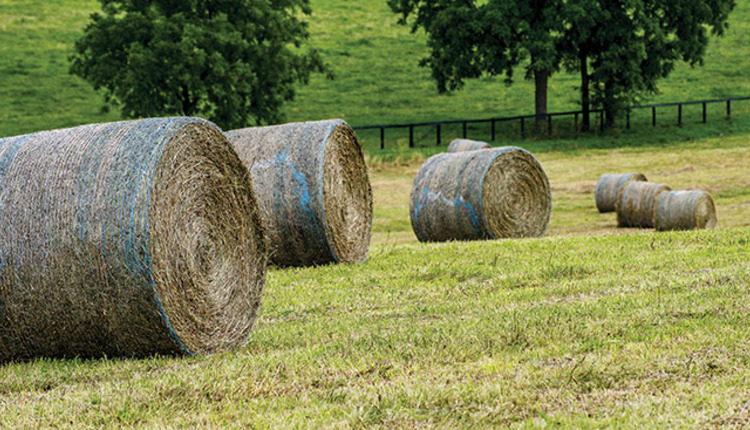
One of the constants in the forage world seems to be the love-hate relationship that practicing agriculturalists have with haymaking. On the one hand, we talk a lot about cutting strategies, hay testing, curing and baling tweaks, and so on. On the other hand, some say it is too expensive for small producers to own hay equipment.
A nationally recognized economist recently told me the biggest challenge to the profitability of cattle operations was iron toxicity. He meant that their haymaking equipment costs were eating up the profits of the cattle enterprise. While I am sure his statement was based on hard numbers, it struck me as an oversimplification of a complex situation.
So, is it feasible to quit making your own hay? Here are some tangible steps:
Establish a long-term relationship with a handful of growers who have a good reputation among other customers in the community. Let them know you’re in it for the long haul. Make sure they have the scale to meet your needs and will let you see the fields your hay will come from. Most will regularly test their forage and will be able to communicate why their hay will meet or exceed your livestock’s needs. Having more than one supplier will spread your risk.
Differentiate yourself from the “average” customer. In any given area, hay gets ready to cut about the same time; you want to be among the first customers a commercial hay supplier thinks about. Take delivery in-season, saving the storage space of the hay grower. Communicate your needs for hay early enough to let the producer plan their season. Communicate about the quantity and quality needed and be conversant in the language of forage quality.
Help move the hay from the field to your farm if you can, or be there to unload the hay when needed. Be there when hay is delivered to inspect the bales; show interest in the challenges of your main hay suppliers. Be a good payer — slow payment or no payment are the biggest problems for hay sellers. Pay in cash if needed, and be willing to offer partial prepayment to secure the hay supply you need. Being a good payer is the best way to differentiate yourself to hay suppliers.
Be willing to pay for quality and service. “Everybody wants a bargain — it’s human nature,” said Ron Tombaugh, owner of Dart Hay Services in Streeter, Ill., and a hay producer himself. “There is no such thing as cheap hay, you pay eventually in terms of animal performance,” Tombaugh explained.
The glut of “$20 a roll” hay in flush years is a real problem for commercial hay producers. Any analysis will show no one can afford to make hay for $20 a roll, much less make a profit. Good suppliers will try to meet your stated needs, but they won’t do it for free.
Establish a relationship with a hay supplier where you are comfortable paying above Walmart prices for good hay in flush years, and they are comfortable giving you a break on price in deficit years to keep you as a customer.
Adjust your pasture system accordingly. Buying all hay off-farm will require rethinking your livestock enterprise to harvest the excess spring growth that characterizes most years. Graze this excess growth with livestock that can provide cash income such as with retaining fall-born calves.
Buying off-farm can provide an opportunity to convert fields to higher yielding, higher quality forages. These conversions could allow the planting of summer-productive forage that better addresses your traditional pasture deficit periods. Another alternative is to pay someone else to cut and bale those acres for you, assuming they can do so in a timely manner.
In reality, farmer practice says they greatly prefer to be able to make their own hay. This preference may be more of a statement about the scarcity of suppliers than their unwillingness to stop making hay.
My conclusions:
- Haymaking is expensive. Equipment is not cheap so watch your spending. Keep your costs as low as possible and know your cost of production. This fact alone may convince you that buying hay is an economic option.
- If you are going to make hay, make the best hay possible. Making bad hay is expensive even with low equipment costs. Bad hay limits production, costs money, and wastes time — the commodity in shortest supply. A compelling argument can be made that it may be more economical to make haylage (a higher cost option) because the quality is much better, with higher livestock output per dollar spent.
- If you are going to stop making hay, do so gradually and only if you can find reputable growers who are interested in your success as well as their own.
By now you are doubly convinced of the complexity of this topic. But perhaps you have a better idea of how much “iron” constitutes toxicity on your farm.
Happy foraging.
This article appeared in the August/September 2017 issue of Hay & Forage Grower on page 20.
Not a subscriber? Click to get the print magazine.

